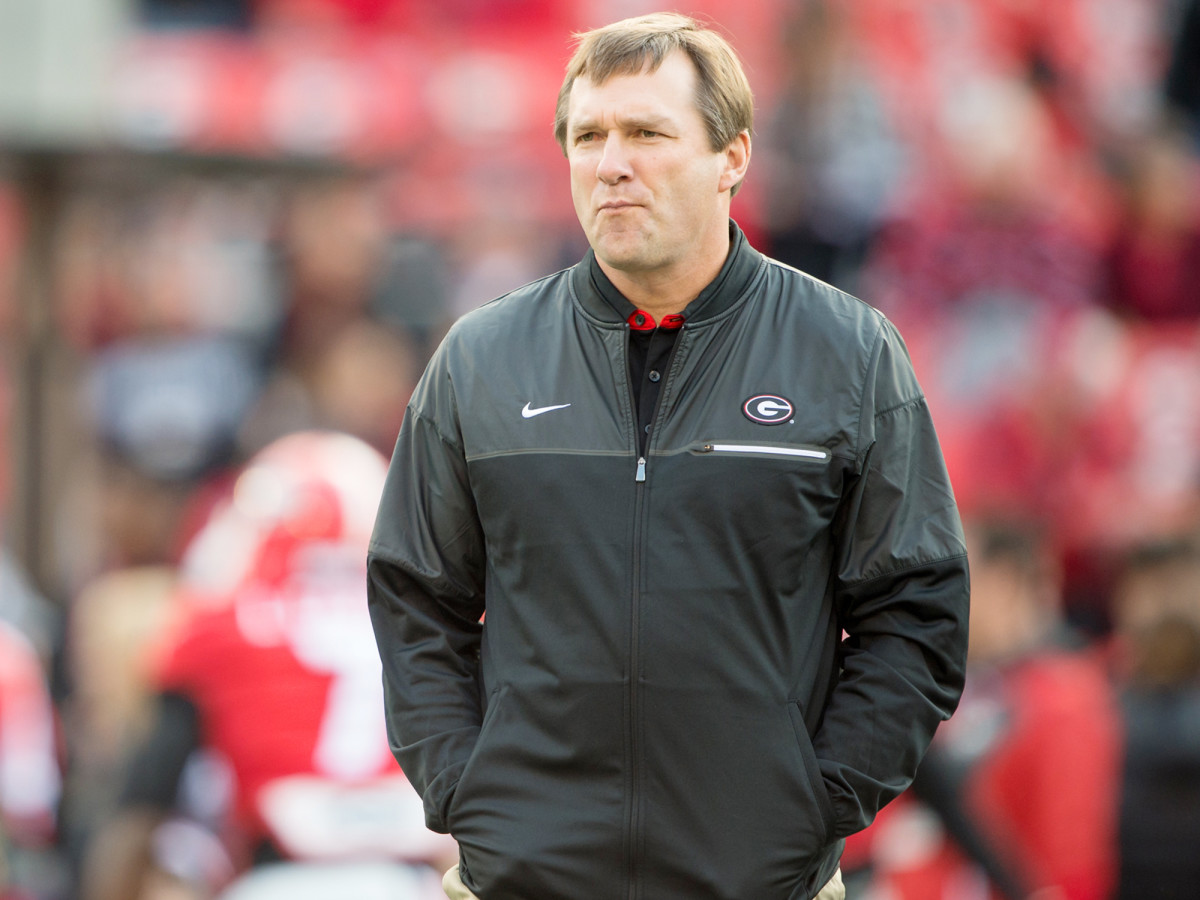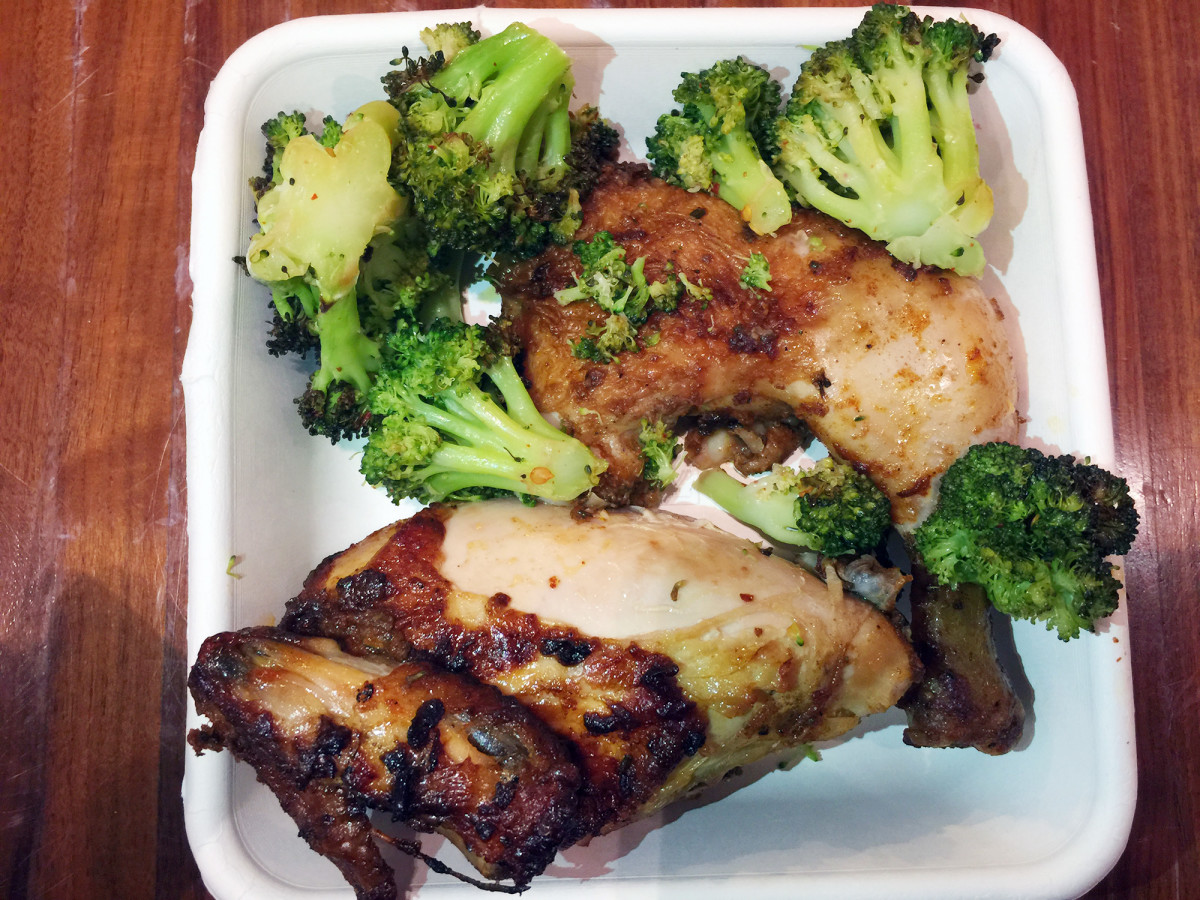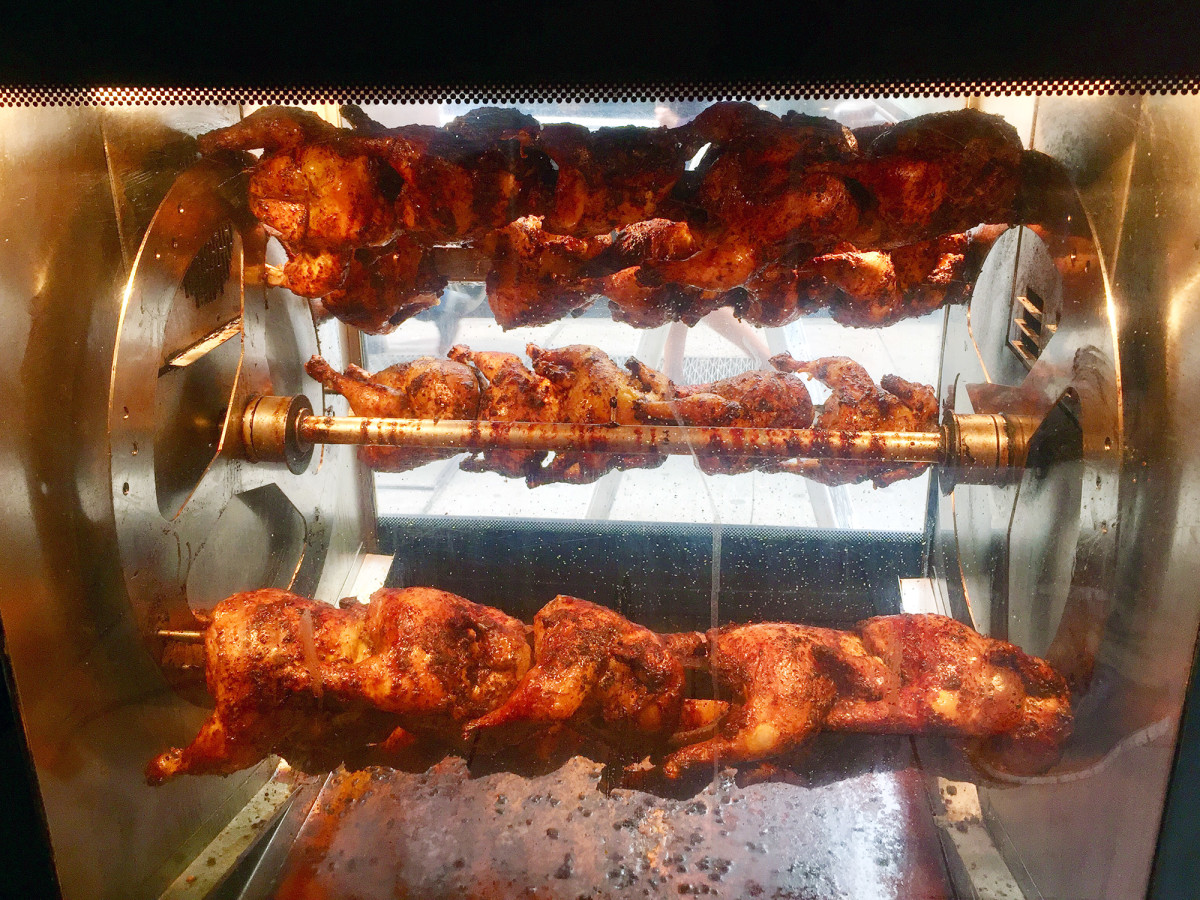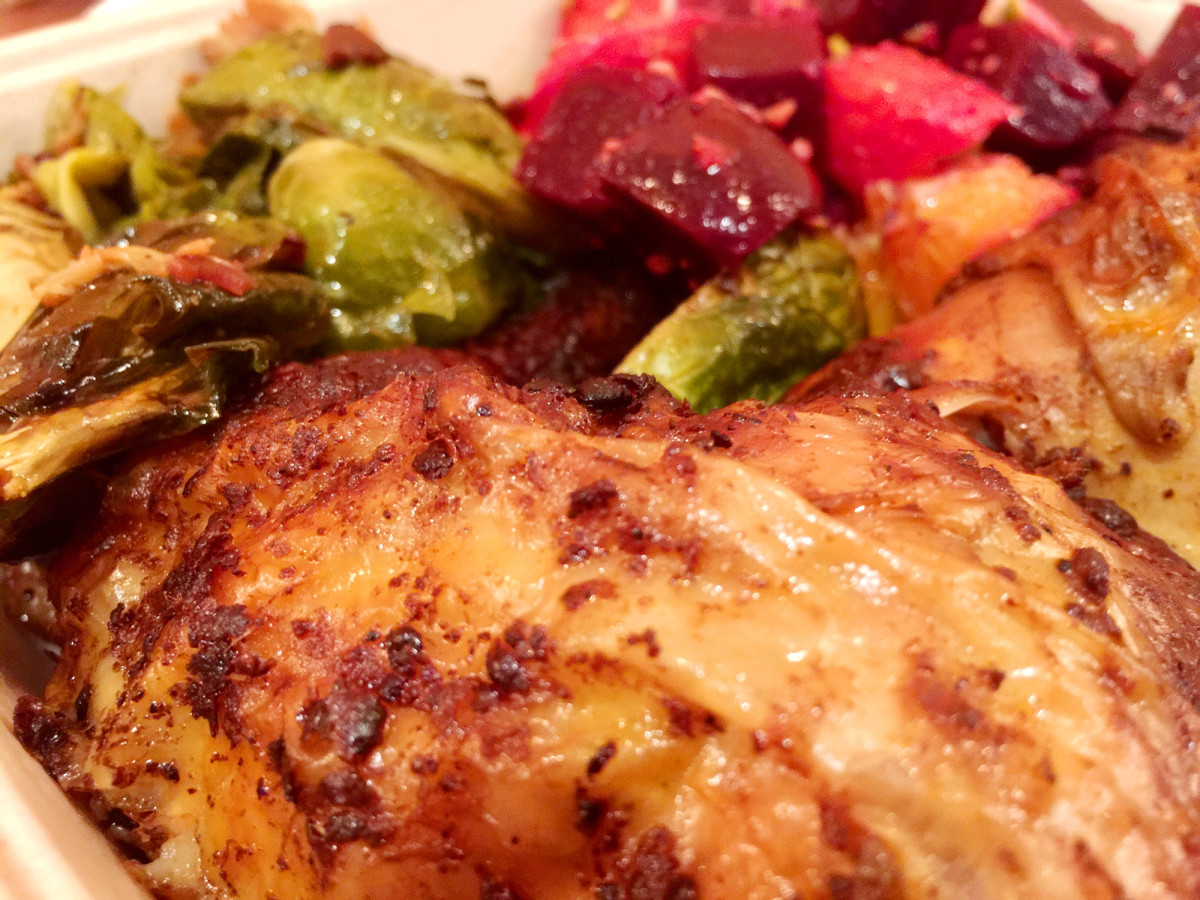The Big 12 could be in big trouble, more college football takeaways from NFL draft

The NFL draft is in the books, so now it’s time to break down what all those selections mean. You can find plenty of coverage elsewhere on this site examining how NFL teams may fare thanks to their newest players, but at Punt, Pass and Pork World Headquarters, we’re more interested in what the draft tells us about college football going forward. So let’s look at some numbers and decipher what it all means.
The most glaring statistic is bad news for the Big 12. Here are the number of players drafted from each FBS league:
Conference | Number of players drafted |
|---|---|
SEC | 53 |
ACC | 43 |
Pac-12 | 36 |
Big Ten | 35 |
AAC | 15 |
Big 12 | 14 |
MAC | 11 |
Conference USA | 9 |
Mountain West | 8 |
Sun Belt | 5 |
Independent | 3 |
And before you say “but the Big 12 only has 10 teams,” here are the number of players drafted per school:
Conference | Number of Players drafted per school |
|---|---|
SEC | 3.8 |
ACC | 3.1 |
Pac-12 | 3.0 |
Big Ten | 2.5 |
Big 12 | 1.4 |
AAC | 1.3 |
MAC | 0.9 |
Conference USA | 0.7 |
Mountain West | 0.7 |
Sun Belt | 0.5 |
No matter how the numbers get sliced, this is a glaring indictment of the Big 12. The question is whether it’s an indictment of the league overall or the league this year. Remember, the Big 12 averaged 2.6 draftees per team last year, 2.5 in ’15 and 1.6 in ’14. If the numbers jump closer to the other leagues next season, perhaps alarm bells aren’t necessary. But if they stay down, that could make it nearly impossible for Big 12 teams to recruit against SEC teams coming from the east and Pac-12 teams coming from the west.
Every recruit wants to know how a school will prepare him for the NFL, and the SEC and Pac-12 schools that recruit in Texas, Oklahoma and the rest of Big 12 territory can say with relative authority that NFL teams do not seem to like the players the Big 12 is putting out. That would further drain a talent pool that—judging by recruiting rankings—is already shallower than the pools in the other Power 5 leagues.
What don’t NFL teams like about the Big 12? Only the offenses and the defenses. Going into last season, the Air Raid and Art Briles offenses had proliferated so thoroughly that many NFL coaches and scouts viewed the Big 12 as a league playing an entirely different sport. Last season, Kansas State had the only offense that didn’t come off either the Hal Mumme/Mike Leach tree or the Briles tree. (Yes, Briles worked with Leach at Texas Tech. No, those offenses are not the same. But they do drive NFL personnel people nuts for the same reasons.)
Which schools won the NFL draft's first round?
NFL types especially hate the offensive line play because players rarely operate out of three-point stances and even though the teams pass quite frequently, players don’t have to hone many of the pass-protection skills they’ll need in the NFL. Much of the time, the linemen block a simple run play and the quarterback decides whether to hand off or throw after the snap. When the Texans took Baylor center Kyle Fuller with the 25th pick of the seventh round, they made him the first and only Big 12 offensive lineman selected in this draft.
Meanwhile, the league had only two receivers (Oklahoma’s Dede Westbrook by Jacksonville in the fourth round and West Virginia’s Shelton Gibson by Philadelphia in the fifth) selected. For a conference that flings the ball all over the yard, that should be fairly shocking. But NFL teams have gotten wise to the fact that receivers in those offenses run a much more limited route tree than receivers in other offenses.
That said, it might have just been a down year for talent in the league. Also, new coaches are about to diversify the offenses. The Briles offenses are gone at Baylor and Texas. Matt Rhule has brought his own scheme to Waco, and Tom Herman will run his version of Urban Meyer’s offense—which pumped out plenty of current NFL offensive line starters—in Austin. With an assist from Charlie Strong’s recruiting, Herman’s staff may have Texas finally pulling its weight again. The Longhorns haven’t had an offensive lineman drafted in 11 years, but left tackle Connor Williams could break that streak in ’18 if he chooses to leave after his junior year.
At West Virginia, coach Dana Holgorsen and offensive coordinator Jake Spavital said last week that they have tweaked the Mountaineers’ Air Raid offense even more because they were worried about the competitive ramifications of running the same scheme as so many other teams in the conference. Currently, Kansas, Oklahoma, Oklahoma State, TCU, Texas Tech and West Virginia run the Air Raid.

Meanwhile, some geographical numbers helped explain the situation at one particular school.
Complete...Most 2017 #NFLDraft picks by state played HS ball:#Georgia 29#Florida 27#California 26#Texas 24#Ohio 16#Louisiana 15
— Gerry Hamilton (@GHamiltonOTF) April 29, 2017
While the state of Georgia led the nation in draftees produced, the University of Georgia had only one player drafted (receiver Isaiah McKenzie, who grew up in Florida). There, Kirby Smart, is your mandate. Given the sheer volume of talent pumped out in America’s eighth-largest state—the Peach State produced 15 draftees in ’16, 30 in ’15 and 25 in ’14—the most popular college football program in the state should be able to produce the same kind of draft classes as Alabama, Clemson and Ohio State on a consistent basis. If that happens, it also would coincide with at least a few SEC East titles and opens up the possibility of SEC titles and playoff berths. This is why Georgia replaced Mark Richt with Smart, and it will be up to Smart to cultivate his (extremely fertile) recruiting grounds. If he does, West Georgia will never again have more players chosen than Georgia in one draft.
If Smart needs any inspiration, he can think back to his time with Nick Saban at Alabama. That staff’s first season was ’07. In the ’08 NFL draft, teams selected zero Crimson Tide players. They’ve taken 65 since then.
Georgia chased off Richt because things had grown stale, but we learned this weekend that Richt moved on to a fairly stocked cupboard.
Miami led the ACC with 9 draft picks. By my count, 16 players Al Golden signed have been drafted. More will go in 2018, too.
— Andrea Adelson (@aadelsonESPN) April 30, 2017
Al Golden could recruit raw talent, but he and his staff couldn’t translate that into wins at Miami. Earlier in his Georgia tenure, Richt could identify the talent, sign it and develop it. If he is as recharged as he seems, this bodes well for the Hurricanes in the near future.
The final number we’ll consider is 253. On the draft’s 253rd and final selection, the Broncos took Ole Miss quarterback Chad Kelly. There have been a few recognizable Mr. Irrelevants before—South Carolina kicker Ryan Succop in ’09 and Northern Illinois quarterback Chandler Harnish in ’11, for example—but none has been better known at the time of his selection than Kelly. The reason Kelly is so well known? Entering the season, he was the best quarterback in the SEC. And if he can overcome off-field concerns and injuries (torn ACL, sports hernia, torn ligament in right wrist), he has the talent not only to make the roster but also to compete for a starting job.
Five NFL draft prospects who will exceed expectations
Given what we know of the three, a healthy, head-screwed-on-straight Kelly could be fairly competitive with current Broncos quarterbacks Paxton Lynch and Trevor Siemian. Given time to adjust to an NFL offense rather than the Rebels’ up-tempo spread, he could absolutely fill in for either in case of injury down the line and wind up a serviceable NFL starter. Instead of a reason to laugh at Kelly, this image from Saturday’s sixth round may soon provide a reason to laugh at all the teams that passed on him.
Let's go live to Chad Kelly pic.twitter.com/rs9n05Uul5
— Dan (@AtIantaDan) April 29, 2017
If Kelly doesn’t have the correct attitude or can’t recover from his injuries, the Broncos risked very little. But if his mind and body cooperate, Kelly might be the most relevant Mr. Irrelevant ever.
A random ranking
If you keep reading, you’ll see multiple Kenny Rogers mentions. Writing about Kenny got me thinking about his favorite duet partner, Dolly Parton. So today, we’ll rank the top five Dolly songs. She’s an American treasure.
1. “Jolene”
2. “Coat of Many Colors”
[youtube:https://youtu.be/9zLsAf6SCwY]
3. “I Will Always Love You”
4. “Islands in the Stream” (with Kenny!)
5. “9 to 5”
First-and-10
1. I don’t usually have an issue with players leaving college early to go to the NFL. It is, after all, an economic decision. A player who has maximized his value should leave. A player whose stock can’t rise any higher—he’s played enough that the NFL scouts know he is what he is—should also go get paid. The only players I question are the ones who make bad economic decisions and leave potential money on the table. There were a few players this year who may have taken bad advice.
• LSU WR Malachi Dupre, seventh round to the Packers
Dupre could have increased his production in Matt Canada’s first offense in Baton Rouge. It’s no secret that LSU’s receivers were criminally underused in the latter stages of the Les Miles era, but Canada has proven adept at spreading the ball to his best playmakers. Dupre would have been one of those, and he probably would have made more money on his first contract.
• Clemson WR Artavis Scott, undrafted
Scott earned his degree in three years, so he’s already got that in his pocket. But he might have stuffed some more money in there by being the security blanket for whatever first-year starting quarterback takes over the Tigers’ offense this fall.
• Virginia Tech QB Jerod Evans, undrafted
Perhaps Evans saw the love thrown Mitchell Trubisky’s way and figured one good year as a starter in the ACC was all he needed. But that isn’t usually how these things work. Had Evans returned to Blacksburg, he might have found himself leading the Hokies to a second consecutive ACC title game. That might have drawn the attention of NFL teams.
2. Michigan coach Jim Harbaugh enjoyed the Wolverines’ trip to Rome as much as or more than his players did. Here’s Harbaugh giving a Michigan helmet and Jordan brand shoes to Pope Francis.
There is no word to describe the inner beauty that shines through the eyes of our Holy Father and his words... "Pray for me" pic.twitter.com/doUpeajuRp
— Coach Harbaugh (@CoachJim4UM) April 26, 2017
3. Later in the week, Harbaugh showed off his vocal chops.
Harbaugh: Opera Singer pic.twitter.com/vhqLdYwXiU
— angelique (@chengelis) April 28, 2017
4. After that, he channeled Russell Crowe.
Harbaugh reciting Gladiator (assist from Sarah) pic.twitter.com/JUyGHWH5v5
— angelique (@chengelis) April 28, 2017
5. FBS commissioners met last week in Texas to discuss College Football Playoff matters. They didn’t decide anything very exciting, but they did announce that the first selection committee rankings for 2017 will be released Oct. 31. This seems like a great way to celebrate Nick Saban’s birthday—or any other occasion that might happen to fall on that day.
6. ESPN.com's Adam Rittenberg tells the heartbreaking and inspiring story of the official who refereed Ohio State’s spring game and may work her way into wearing the white hat on a fall Saturday sometime soon.
7. The Tulsa World’s Cody Stavenhagen tells the story of Tay Evans, the Oklahoma linebacker who retired from football because of concussions.
8. Arkansas tailback Rawleigh Williams III was carried off the field on a stretcher during the Razorbacks’ final practice of the spring on Saturday. Fortunately, Williams had only suffered a stinger and should make a full recovery.
Arkansas team in prayer as Rawleigh Williams III carted off field.
— SEC Network (@SECNetwork) April 29, 2017
UPDATE: RW3 diagnosed with a stinger, taken to hospital as a precaution. pic.twitter.com/vqtsgqojSn
I really appreciate all of your thoughts and prayers and ask that you continue to pray for my family and I. God Bless! #WooPig
— Rawleigh III (@The3rdRawleigh) April 30, 2017
9. Receiver Darren Carrington made a highlight reel catch in an Oregon spring game that turned into a showcase for incumbent starting quarterback Justin Herbert.
There are no words to describe how AMAZING this catch was by Darren Carrington😱
— Pac-12 Network (@Pac12Network) April 29, 2017
It's the @OpusBank #12Best Moment! https://t.co/phPcIOluJ1
10. Of course former Michigan tight end Jake Butt got a Charmin deal.
Maybe the best endorsement deal ever! @JBooty_88 signing with @Charmin right before then #NFLDraft @UMichFootball @wsyx6 @B1Gfootball pic.twitter.com/Uwt8mQj7E1
— Chetan Rakieten (@chetanrakieten) April 26, 2017
Not to be outdone, former Western Kentucky offensive lineman Forrest Lamp made a deal with Lamps Plus.
Forrest Lamp has signed an endorsement deal with @lampsplus. I love this for some ridiculous reason. Just endorsing some lamps. pic.twitter.com/CRsPmQCuzg
— Will Brinson (@WillBrinson) April 27, 2017
What’s eating Andy?
ESPN laid off a bunch of people last week. Many of those people are my friends. One of the most frustrating parts of watching your friends get separated from their jobs so publicly is watching people celebrate their job loss because they believe the layoff is some sort of cosmic justice for the network’s world view not matching their own.
ESPN didn’t lay off people because of mass cancellations from viewers upset that the political views occasionally espoused on its air typically lean left. That those opinions lean left isn’t up for debate. They do. Those of us in the business whose politics lean right tend to keep our mouths shut because we’re so outnumbered at work. But people aren’t canceling ESPN because of the political views of the network’s personalities. If they did, those same viewers also would have to ditch Fox News, HGTV, TBS and the rest of the basic cable universe because those channels remain bundled together on most services. (An exception to this would be Dish Network’s Flex Pack plan, in which a customer could drop the “National Action” pack that includes ESPN. And if skinny bundles such as this one become more prevalent, more people could cancel ESPN for the reason they currently claim they are but actually aren’t.)
Plenty of people are, however, canceling cable or never signing up for it in the first place because they can find the entertainment they want much cheaper elsewhere. Live sports are the only thing keeping the cable bundle together, so if you don’t care about sports, why spend so much? This consumer behavior has slashed ESPN’s revenues significantly at a time when ESPN’s overhead has increased significantly because of more expensive rights deals with the NBA, NFL and college football conferences. Falling revenue plus rising overhead equals layoffs. Trust me. I used to work for a newspaper and I still work for a publishing company. I’ve seen this movie before.
Inside one of the worst Wednesdays in the history of ESPN, as 100 staffers lose jobs
In truth, the salaries of the people cut loose won’t make much of a dent in the bigger problem. The excess from a better-than-expected opening night for Guardians of the Galaxy 2 might equal the amount parent company Disney will save on those salaries. But the company had to show shareholders it was serious about cutting costs. So it cut people loose.
This is the harsh reality in the rapidly changing business we all chose. We’re all working under the assumption that every day could be the day the Turk tells you to go see the head coach and bring your playbook. But if you’re going to cheer about people losing their jobs, at least understand what you’re actually cheering.
What’s Andy eating?
If you’ve read this space the past few weeks, you know I’ve cheated on my diet a few times for the sake of easily consumable online content. (Pork rind nachos are totally paleo, right?) But for the most part, I have stuck to my plan to get significantly less fat by next football season. I’m trying to do this using the original fad diet—eating fewer calories than I burn each day. In the past few weeks, I’ve enlisted the help of the MyFitnessPal app, which has kept me accountable but also has brought on waves of despair around 2 p.m. every day when I realize how few calories I have left to eat. But it’s working. As of this writing, I’ve lost 21 pounds since February.
To best manage a caloric limit, I have tried to eat as little sugar and grain as possible. That way, I avoid glycemic rollercoaster and feel just as full with less food. This is quite easy to control at home, where I’ve stocked the place with vegetables and meats. It’s not as easy to control when I have to travel for work.
Most quick-service restaurants don’t serve dishes that contain only meat and vegetables because those are low-profit margin foods. There are salads, but many get drowned in high-calorie dressing. Plus, I don’t always feel like a salad.
I wasn’t worried about this as I headed to New York last week for our live draft show, though. On the walk through lower Manhattan between my hotel and SI’s office, I’d pass Fields Good Chicken. I stumbled upon Fields Good Chicken shortly after our office was moved from midtown to downtown in December ’15. The concept is similar to Boston Market, but the food tastes much closer to what original Boston Market competitor Kenny Rogers Roasters served. Kenny made better chicken—unlike his competitor, he actually seasoned it—and better sides. But Kenny lost that franchise war, leaving us only with memories and one exceptional Seinfeld episode. The Kenny Rogers Roasters name lives on in Asia, but the chicken no longer resembles the glorious spit-roasted magic the Gambler blessed us with in the 1990s.
Because their advertising touts their local sourcing and their love of whole grains and good fats, I doubt the proprietors of Fields Good Chicken will appreciate me comparing them to KRR, but given the fondness of my memories for Kenny’s cuisine—and every Kenny-Dolly Parton duet—this is one of the highest compliments I can pay. Plus, they make it easy for me to get roast chicken and vegetables—the perfect combo for my current situation—for lunch and dinner while on the road. So I boarded the plane last week with visions of that juicy, crispy-skinned chicken and roasted Brussels sprouts racing through my head.

When I got to Fields, the chicken was as wonderful as I had remembered. My visits there have climbed to double digits, and every piece of chicken has been cooked perfectly. But the sprouts had disappeared from the menu. Those who read this space regularly know my love for sprouts. This was a disturbing development, but the roast broccoli with red wine vinaigrette was almost as good, so I was willing to let it slide.
I left Fields and began walking down Maiden Lane toward our office on Liberty Street. Suddenly, a familiar smell flooded my nostrils. It smelled just like the roasting chicken I had just left behind at Fields. I looked to my right. In a window, birds spun around on a rotisserie. Only a block away, someone had started another rotisserie chicken war. Now I needed to figure out which one was the Kenny’s and which one was the Boston Market.

The new place is called Hen Pen, and its menu is set up similarly to Fields Good Chicken. Diners can mix chicken and vegetables and/or grains in a bowl or order chicken with veggies or grains on the side. Hen Pen also serves sandwiches, turkey meatballs and porchetta, but since my dietary requirements hadn’t changed, I opted for pure chicken and veggies. When I saw the Brussels sprouts with just the tiniest hint of bacon, I hummed the first few bars of Lady to myself. I tossed in some beets for good measure.
On two visits Hen Pen’s chicken was just as good as the chicken at Fields. The sprouts weren’t as good as the ones Fields used to serve, but since they existed as a menu item, they took the side dish prize. The beets were good, but I love sprouts and bacon. On visit No. 2, I simply doubled down on them.

Hen Pen is Kenny Rogers Roasters in this analogy, and I fear that it will suffer the same fate as the original. The good news? Fields is what Boston Market should be. So if Fields Good Chicken ever goes national, all of us who routinely seek meat and vegetables served across a counter in less than five minutes will be the lucky ones.
If Fields brings back the sprouts, we’ll be even luckier.
